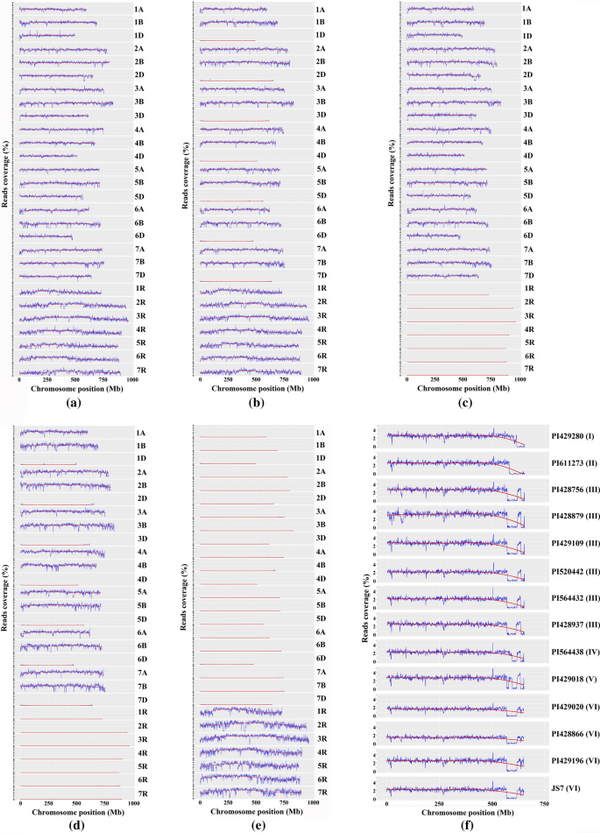Triticale (×Triticosecale Wittmack) is an economically important grain forage and energy crop planted worldwide for its high biomass. Little is known about the genetic diversity and loci underlying agronomic traits in triticale. We performed genotyping-by-sequencing of 199 cultivars and mapped reads to the A, B, D, and R genomes for karyotype analysis. These cultivars could mostly be grouped into five types. Some chromosome abnormalities occurred with high frequency, such as 2D (2R) substitution, deletion of the long arm of chromosome 2D or the short arm of 5R, and translocation of the long arms of 7D/7A, the short arms of 6D/6A, or the long arms of 1D/1A. We chose only widely planted hexaploid triticale cultivars (153) for genome-wide association study. These cultivars could be divided into nine distinct groups, and the linkage disequilibrium decay was 25.4 kb in this population. We identified 253 significant marker-trait associations (MTAs) on 20 chromosomes, except 7R. Twenty-one reliable MTAs were identified repeatedly over two environments. We predicted 16 putative candidate genes involved in plant growth and development using the genome sequences of wheat and rye. These results provide a basis for understanding the genetic mechanisms of agronomic traits and will benefit the breeding of improved hexaploid triticale.

Read coverage in five ploidy species. a Octaploid triticale (AABBDDRR), b hexaploid triticale (AABBRR), c hexaploid wheat (AABBDD), d tetraploid wheat (AABB), e rye (RR). f Partial deletion of the long arm of chromosome 2D in 14 accessions based on read coverage. Deleted segments are divided into type I to VI based on length
This result was published in Theoretical and Applied Genetics with the title of “Genotyping-by-sequencing and genome-wide association study reveal genetic diversity and loci controlling agronomic traits in triticale”.
The link below will guide you to the reading:
https://doi.org/10.1007/s00122-022-04064-5
